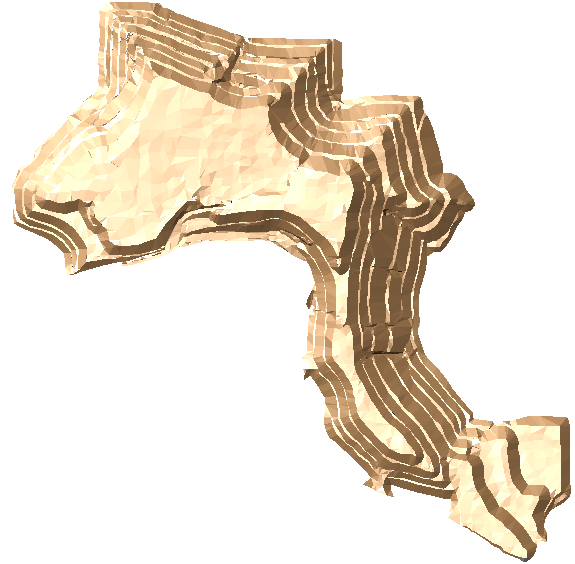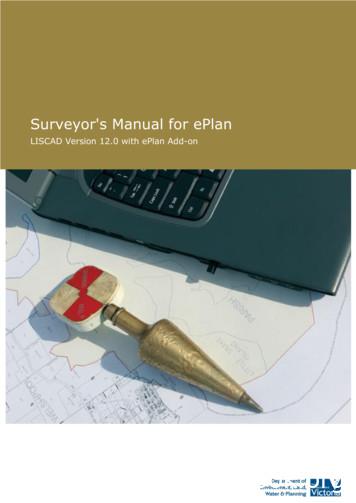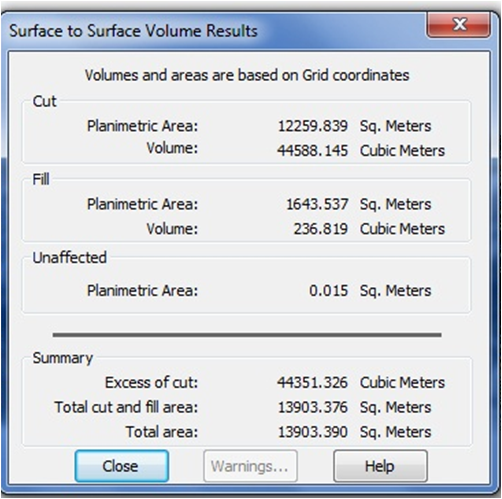(This functionality is available with the Input / Output module)
Listech’s latest release of LISCAD V12.2 is now available and includes several new features designed to simplify and enhance the user experience. Notable enhancements to LISCAD V12.2 include: Create Polygon by Inside Mouse Click Create a polygon with a single mouse click and supercharge subdivision allotment creation. Examine 3D Offset commands. The user manual for LISCAD SEE Software for a beginner Welcome to LISCAD Surveying & Engineering Software. You have collected the field survey data. Now the next step is to process the field data. To process the data software is needed- LISCAD SOFTWARE. Service Manual for a ZF - Ecomat. Land Rover Lr3 Workshop Manual Toyota Camry Transmission Repair Manual Caterpillar Cat 4.236 diesel engine parts manual 2010 Hyundai Elantra Manual Typical Sewing Machine Manual Liscad Manual Cleaning Manual For A Winchester Cooey 600 Pgo Comet Service Manual. LEICA LISCAD CAD The final part of the jigsaw, LISCAD CAD generates your final plan. A whole CAD package that is specifi-cally tailored towards surveying and map-ping, LISCAD CAD contains many advan-ced features such as multiple window display of the same. 1 LISCAD ePlan Manual Version 2019 Introduction To ePlan ePlan is a national initiative spearheaded by the Intergovernmental Committee on Surveying and Mapping (ICSM) to replace the existing paper and PDF plans of subdivision with a new electronic file format (ePlan). This enables the computerisation and automation of many industry and government.
Imports data from Leica DBX. The instruments utilising Leica DBX include the System 1200, Viva and Nova.
The data imported may consists of:
Pscad Manual
- Geometry (includes points, straight lines, and areas as polygons)
- Images
- Point Cloud Scans

Point, line and polygon codes associated with the geometry objects to be imported are used.
Refer also to the Import dialog box topic.
This instruments use Compact Flash (CF) cards to store the data.
To transfer between Leica DBX and the system, you must have a CF card drive installed in or connected to your computer, and the appropriate device drivers already loaded. Refer to your CF card drive manual for details of these drivers.
The import operation transfers the data from the selected Leica database on the CF card in that drive.
Sample code lists for use on the Leica DBX instruments are available from the LISCAD User Folder. You may also create, edit and upload alternative code lists using Leica Geo Office to suit your particular needs.
Notes and Import Rules:
The Leica DBX can store store both TPS and GPS data.
Geometry objects imported include points, lines and areas (polygons). Codes assigned to these objects are used via the code table to set LISCAD object attributes. A line style lookup 'Viva & System1200.llu' is installed with LISCAD in the user directory can be used to match line styles used on the instrument to LISCAD's line styles.
Images taken onboard a DBX instrument are also imported and linked to the appropriate objects in LISCAD. Note: Links to Areas/Polygons are not imported. The images can be viewed in LISCAD using the 'Computations/Examine/Attributes/Object/Photo Attributes' command, where Object refers to either Points, Lines or Polygons. The images and their attributes can also be viewed and edited using the Computations/Edit/Attributes/Photos command.
Scans and geometry may be imported separately or together. Please refer to the Import drop list in the dialog.If the survey is on datum, you would typically import them together using the Import option 'Geometry and Scans'.
Pscad Manual Pdf
However, if the survey is on an arbitrary datum, you may first wish use the Import 'Geometry' option. That will enable you to then transform the geometry onto datum in SEE prior to importing the 'Scans'.
When scans only are imported, the positions of the control points in SEE will then be used to transforn the scans during the import process.
Also, if you prefer to import the geometry via Field Transfer, you could adjust the survey using traverse editor or least squares adjustment, then later import the 'Scans' only to ensure they are transformed to your adjusted control.
The DBX instruments allows both geographical WGS84 and grid co-ordinates to be stored in the same job. You have two options to transform co-ordinates as they are imported. You can use a LISCAD transformation OR you can use a transformation that is internal to your Leica job (Note: these will appear in the dropdown list on the dialog).
When importing DBX data into LISCAD, the type of LISCAD project you have set up and which transformation you use affects the data that can be imported.
LISCAD on a Plane
- Grid co-ordinates will be imported.
- LISCAD Transformation - WGS84 geographical co-ordinates cannot be transformed and will therefore not be imported.
- Leica Transformation - WGS84 geographical co-ordinates will be transformed to grid via the selected transformation and will be imported.
LISCAD on a Projection (ellipsoid not based on WGS84) with no transformation selected
- Grid co-ordinates will be imported.
- WGS84 geographical co-ordinates cannot be transformed and will therefore not be imported.
LISCAD on a Projection (ellipsoid not based on WGS84) withtransformation selected
- Grid co-ordinates will be imported.
- LISCAD Transformation - WGS84 geographical co-ordinates will be transformed to the projection via the selected LISCAD transformation and will be imported.
- Leica Transformation - WGS84 geographical co-ordinates will be transformed to the projection via the selected Leica transformation and will be imported.

LISCAD on a Projection (ellipsoid based on WGS84)
- Grid co-ordinates will be imported.
- WGS84 geographical co-ordinates will be imported.
Any co-ordinates that can not be imported will be listed in a report at the end of the process.
LISCAD will treat points with elevations in the following manner:
- If a point has an orthometric height, then this is imported directly into SEE.
- If a point has an ellipsoidal height, LISCAD will attempt to use the appropriate Leica Geoid Model (GEM file) to convert the height to an orthometric height. It is expected that the GEM file referenced in the Dbx will be in the same folder as the Dbx files. The user can only browse to the GEM file of name referenced in the Dbx. The name of the required GEM file is displayed in the Filter section of the folder browser dialog.
- If there is no geoid model, LISCAD uses the geoid separation set in 'Utilities/Configure/Earth Constants' to calculate an orthometric height.
- When importing data through 'Data Conversions/Import/Leica System 1200', warnings are created for every point that has had LISCAD's Geoid separation applied to it.
- When importing data through 'Field Transfer/Input/Data Recorder', a note is put in the RAW file for every point that has had LISCAD's Geoid separation applied to it. Similar warnings are also placed in the field file and the reduction report.
LISCAD Land Surveying & Engineering Software features geodetic COGO computations; total station, data logger, GPS and digital level field surveying. LISCAD, Surveying and engineering office software for field to finish. To complete this tutorial you will require the Volumes, Modelling and Computations modules. Note: This tutorial cannot be completed using LISCAD Lite. Aim.
| Author: | Kigataur Shaktinris |
| Country: | Vietnam |
| Language: | English (Spanish) |
| Genre: | Business |
| Published (Last): | 3 August 2006 |
| Pages: | 278 |
| PDF File Size: | 20.73 Mb |
| ePub File Size: | 15.36 Mb |
| ISBN: | 384-7-32661-781-5 |
| Downloads: | 61189 |
| Price: | Free* [*Free Regsitration Required] |
| Uploader: | Mikagor |
Selecting Close will close the Version dialog. Select OK to close the dialog. The application file details are now displayed in the Version dialog.
Tutorial and Other Help Information
This dialog contains a table that displays the name, version number, size bytesdate and time of each application file. Earthworks Volumes – compute an tutotial volume between surfaces, determine surface intersections, create height difference data sets and calculate progressive volumes between planes or irregular surfaces.
Selecting the Help menu item gives you access to a number of helpful commands if you are new to CAD, need to freshen up on your CAD skills, or just need more information. This release includes new and improved creation, editing, and reporting, as well as support for CAD masked text and other enhancements throughout the system. Input and Output – transfer data to and from total station, data logger, GPS and digital level field surveying devices, as well as software systems including: Click Here for further tips.
Adjust traverse or network frameworks for both horizontal and vertical control. The LISCAD web site contains an extensive download library, including the latest release software, a full archive of previous versions, additional reports and data convertersmiscellaneous drivers, code lists and toolkits.
View point clouds in 3D to create point and line objects. This dialog box is used to display copyright information on the application and access details on the application files.
Save on the latest software solutions for surveying, engineering and land related industries. Digital Terrain Modelling DTM – formation is achieved using a geographically indexed data base to ensure fast and accurate formation of triangles on data sets of any size.
Liscad Manual
Once a digital terrain model is formed, the contours can be instantaneously displayed at any interval.
Individual triangles can be easily coloured or textured to give a realistic representation of tutoriap model. Help Topics to open the on line help. Designed for small format tablet computers, the graphical interface combines finger or stylus operation with CAD-type viewing controls.
LISCAD Surveying & Engineering Software
Tutorial to open the on line tutorial that will assist you in developing your skills. LISCAD on the Web to open your web browser and take you to one of the following web pages click on the following links. Point Cloud – import, view, edit and digitise point cloud data. Models can be coloured, textured or have background images draped over them.
Surveying & Engineering Field & Office Software
By liscsd our website you consent to all cookies in accordance with our Cookie Policy. Transformations – transform between any projections, or compute least squares transformations from coordinate sets. Here you will find all of the product information, downloads and support you require. Join the thousands of satisfied customers in over countries and discover why LISCAD will give you the added advantage over other land surveying and civil engineering software.
Profiles and Design – create and edit long section and cross sections for CAD output and end area volumes. Contact Leica Geosystems Find your Leica Geosystems contact for sales, support and technical service. The Profiles and Design module incorporates an impressive new condition-based system for easy generation of virtually any civil engineering and road design. Input and Output – transfer data to and from total station, data logger, GPS and digital level field surveying devices, as well as software systems including:.
About CAD to display the About dialog. A message will appear indicating the name and location of this file. This website uses cookies to improve user experience. Clearly see your liscwd build as you go. Welcome to the home of LISCAD, the powerful surveying and engineering software renowned worldwide for its innovation and quality.
Least Squares Adjustment – adjust field surveying measurements with a rigorous least squares solution. It is intuitive and easy to use as well as being flexible and adaptable to your procedures. To access the application file details select Version. Educational institutes can obtain an education license to include all modules and run stand alone or a network with 10 or more users at a time. For convenience and flexibility, LISCAD is available in modular form so you only need the software necessary to fulfil your daily tasks.